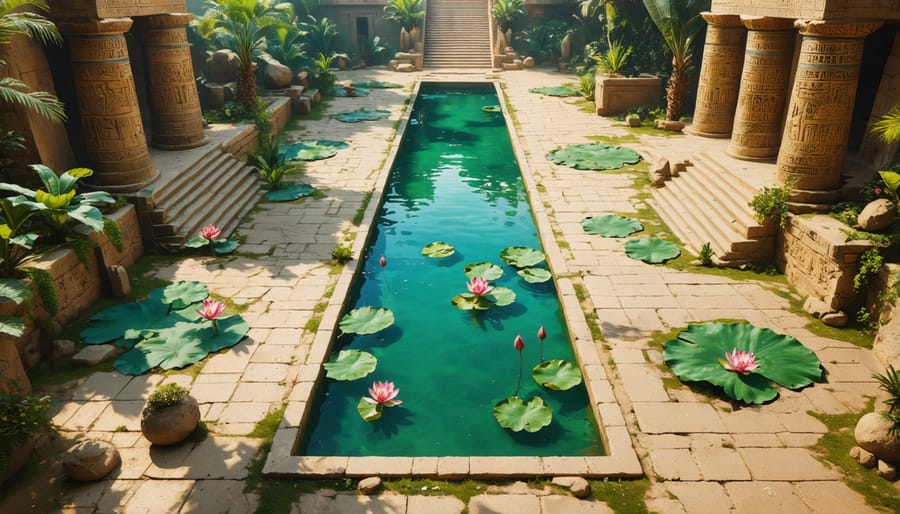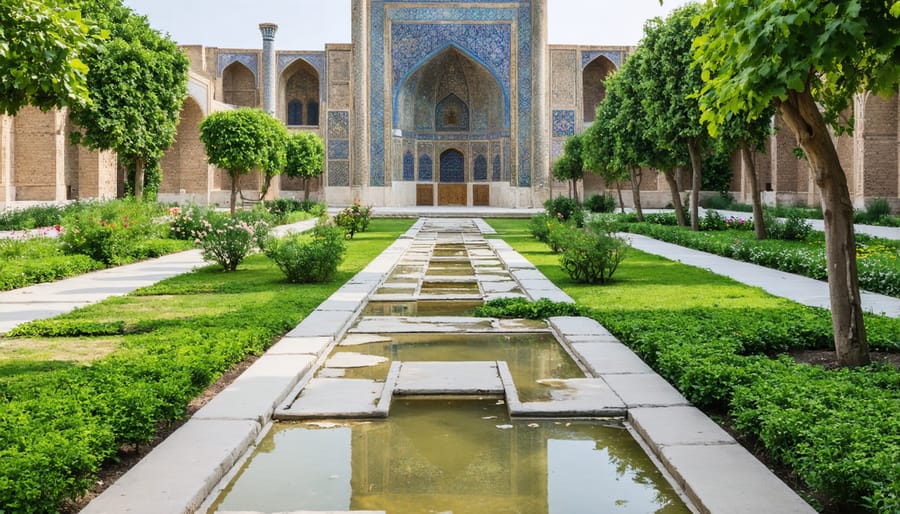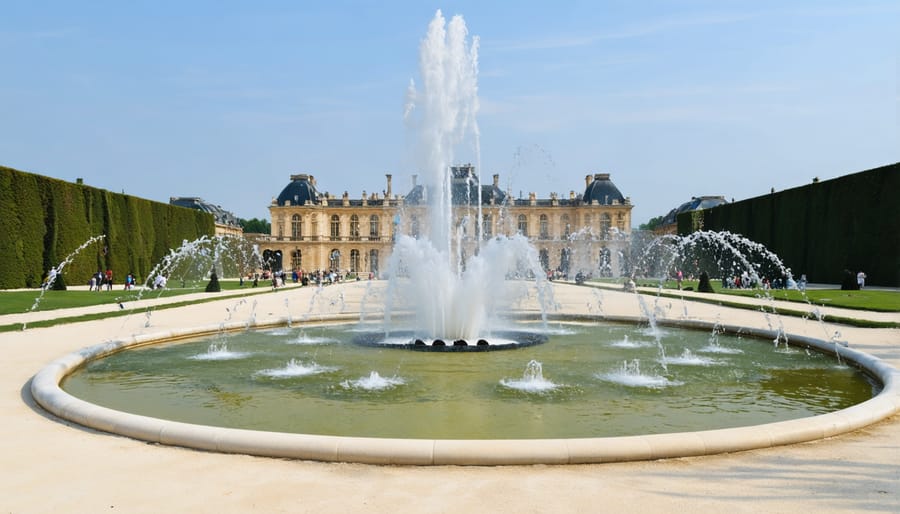
Water Gardens Through Time: How Royal Dynasties Shaped Our Modern Pool Designs
Throughout history, humanity’s quest for beauty has shaped our understanding of aesthetics in profound and lasting ways. From the sacred water symbolism in ancient cultures to the mathematical precision of Renaissance art, our perception of beauty has evolved through distinct cultural lenses and philosophical frameworks.
The journey of aesthetics began in ancient civilizations, where beauty was often intertwined with divine harmony and cosmic order. Greek philosophers like Plato and Aristotle laid the foundational principles of beauty, arguing that it resided in proportion, harmony, and unity. Their ideas would influence artistic and architectural standards for millennia to come.
Eastern perspectives brought unique contributions, with Chinese and Japanese traditions emphasizing the beauty of asymmetry, imperfection, and the relationship between humans and nature. This philosophical approach to aesthetics introduced concepts like wabi-sabi and feng shui, which continue to influence modern design principles.
As we explore the history of aesthetics, we uncover not just changing artistic preferences, but deeper insights into how different societies understood and expressed their ideals of beauty, order, and meaning. This rich legacy continues to inform contemporary discussions about art, design, and the nature of beauty itself.
Ancient Egyptian Dynasty Water Gardens
Sacred Pools and Lotus Gardens
Throughout history, sacred water features have played a central role in religious architecture and spiritual practices. Ancient civilizations created elaborate pools and gardens that served both practical and symbolic purposes. The lotus, emerging pristine from murky waters, became a powerful symbol of enlightenment in Buddhist and Hindu traditions, inspiring the design of meditation pools surrounded by these sacred flowers.
In Egyptian temples, rectangular pools reflected the sky and stars, creating a mirror between heaven and earth. These pools were often lined with blue lotus flowers, believed to represent rebirth and the sun god Ra. Similarly, Islamic gardens featured four-part designs with central fountains, representing the four rivers of Paradise described in the Quran.
Japanese Zen gardens incorporated still pools for contemplation, while Christian monasteries maintained simple reflecting pools that encouraged spiritual reflection. These religious traditions continue to influence modern water garden design, with many homeowners incorporating elements like lotus flowers, geometric pools, and mindful spaces for quiet contemplation in their backyard sanctuaries.

Engineering Marvels of the Nile
The ancient Egyptians were masters of water management, developing ingenious systems that transformed the harsh desert into a thriving agricultural wonderland. Along the Nile, they created a network of irrigation channels that not only served practical purposes but also shaped the aesthetic principles we still admire today. These channels, known as basins, followed the natural rhythm of the river’s annual flood, creating a harmonious blend of functionality and beauty.
What’s particularly fascinating is their shadoof system – a counterbalanced lever device used to lift water from the Nile into irrigation canals. This simple yet elegant solution became an iconic symbol of Egyptian engineering and influenced water feature designs for centuries to come. The Egyptians also developed nilometers, beautiful structures that measured the Nile’s water levels, combining practical measurement with architectural grace.
These water management techniques weren’t just about agriculture – they created lush gardens around temples and palaces, establishing the foundation for ornamental water gardens. The careful balance of geometry, symmetry, and natural flow in their designs continues to inspire modern water features and garden layouts.
Persian Empire’s Paradise Gardens

The Four-Quarter Garden Design
The four-quarter garden design emerged as a fundamental principle in classical water garden aesthetics, representing the intersection of geometry and natural elements. This layout divided the garden space into four equal sections, typically separated by water channels that met at a central fountain or pool. The symmetrical design wasn’t merely decorative; it held deep symbolic meaning, often representing the four rivers of Paradise in Islamic gardens or the four elements in European interpretations.
Water played a crucial role in this design, with channels carefully engineered to flow from a central point outward, creating both visual appeal and practical irrigation. The channels, typically raised above ground level, served multiple purposes: they provided easy access to water, created pleasant sounds, and helped cool the surrounding area through evaporation.
Each quarter section traditionally featured distinct plantings or decorative elements, creating a harmonious balance between structured geometry and natural growth. The raised pathways along these water channels offered visitors elevated views of the garden while the sound of flowing water enhanced the sensory experience. This design principle influenced garden aesthetics for centuries and continues to inspire modern landscape architects who appreciate its perfect blend of form and function.
Cultural Symbolism in Persian Water Gardens
In Persian culture, water gardens transcended mere aesthetics to become powerful expressions of paradise on Earth. These enchanting spaces featured carefully designed symbolic water elements that represented spiritual purity and divine presence. The characteristic four-part garden design, known as chahar bagh, divided spaces with flowing water channels that represented the four rivers of paradise described in Islamic texts.
Water features in Persian gardens served both practical and symbolic purposes. The sound of flowing water created a sense of tranquility while also drowning out external noise, offering a peaceful retreat for meditation and contemplation. Reflecting pools mirrored the sky, bringing heaven down to earth and creating an illusion of infinite space.
These gardens weren’t just private spaces – they served as gathering places for poetry readings, philosophical discussions, and important social ceremonies. The careful placement of fountains and channels demonstrated the garden designer’s mastery over water, a precious resource in arid regions. Even today, these design principles influence modern water gardens, reminding us how ancient wisdom can enhance our contemporary outdoor spaces.
Chinese Imperial Water Gardens
Ming Dynasty Innovation
The Ming Dynasty marked a significant evolution in water garden aesthetics, blending practical architecture with philosophical depth. During this period, gardens became more than just decorative spaces; they transformed into spiritual retreats that reflected the harmony between human creativity and natural beauty. Ming designers pioneered the concept of “borrowed scenery,” where distant landscapes were incorporated into garden views through carefully planned windows and openings.
Architectural innovations included the development of intricate pavilions with upturned eaves, which created graceful reflections in pond surfaces. These structures weren’t merely decorative; they served as meditation spaces where scholars could contemplate nature while staying protected from the elements. The dynasty’s garden designers perfected the art of rock placement, creating miniature mountains that mimicked famous peaks and provided focal points for water features.
The influence of Neo-Confucianism shaped garden layouts, emphasizing balance and measured beauty rather than grandiose displays. Water elements were designed to create gentle sounds that enhanced meditation, with cleverly positioned stones directing water flow to produce musical notes. Ming gardeners also introduced the concept of viewing gardens from multiple angles, creating different experiences as visitors moved through the space.
These innovations continue to inspire modern water garden design, particularly in creating contemplative spaces that serve both aesthetic and spiritual purposes. The Ming Dynasty’s approach to integrating architecture with natural elements remains a cornerstone of contemporary garden planning.
Qing Dynasty Refinements
During the Qing Dynasty, water garden design reached new heights of sophistication, blending artistic expression with practical functionality. Garden designers of this era introduced innovative water features that created mesmerizing visual and auditory experiences. They perfected the art of strategic water placement, using carefully calculated drops and channels to produce subtle musical notes as water flowed through the garden.
The period saw the refinement of the “borrowed scenery” principle, where distant landscapes were incorporated into the garden’s design through careful framing with architectural elements and water features. Reflecting pools were positioned to mirror surrounding mountains or trees, effectively doubling the visual impact of natural beauty while creating an illusion of expanded space.
Qing Dynasty designers also developed intricate systems of interconnected ponds and streams, often incorporating symbolic elements like dragon-shaped fountains and phoenix-inspired water spouts. These features weren’t merely decorative; they served to maintain water circulation and create different water movement patterns that enhanced the garden’s atmospheric qualities.
Color played a crucial role in this era’s aesthetic principles, with designers using specific varieties of water lilies and lotus flowers to create seasonal color transitions. The placement of ornamental rocks and carefully pruned plants along waterways became more deliberate, creating rhythmic patterns that guided visitors through the garden experience.
European Renaissance and Baroque Gardens
Italian Villa Gardens
Italian Renaissance gardens revolutionized water feature design through their innovative use of terraced landscapes and gravity-fed fountains. These 16th-century gardens transformed steep hillsides into stunning displays of water manipulation, creating a harmonious blend of architecture and nature.
The most remarkable feature was the development of cascading water terraces, where each level showcased different water elements. Villa d’Este in Tivoli stands as a prime example, with its hundreds of fountains, water-powered automata, and musical fountains that delighted visitors. Engineers cleverly utilized natural water pressure from elevated reservoirs to power these features, a technique that influences modern fountain design.
Garden designers incorporated giochi d’acqua (water jokes) – playful water features that would surprise unsuspecting guests with sudden sprays. These entertaining elements were masterfully integrated with formal pools, reflecting basins, and grottos adorned with classical sculptures.
The gardens’ influence extended beyond Italy, inspiring European garden design for centuries. Their use of water as both a decorative and cooling element, combined with strategic placement of fountains to create soothing sounds, established principles still applied in contemporary water garden design. These gardens demonstrated how water features could transform spaces into immersive experiences that engage all the senses.
French Formal Gardens
French formal gardens of the 17th century represented the pinnacle of controlled water aesthetics, showcasing humanity’s mastery over nature through spectacular fountains and precise geometric layouts. These gardens, with Versailles being the most famous example, featured grand water displays that combined mathematical precision with artistic flair. Symmetrical pools, often arranged in patterns that created stunning reflections, served both as decorative elements and demonstrations of engineering prowess.
The gardens typically incorporated multiple water features working in harmony: tiered fountains, long reflecting pools, and cascading waterfalls, all arranged along a central axis. Water jets were precisely calculated to create specific visual effects, with some fountains shooting water up to 27 meters high. These displays weren’t just about beauty – they were statements of power and wealth, requiring complex hydraulic systems and continuous maintenance.
The influence of French formal gardens extends beyond their era, inspiring modern water features in public spaces and private gardens worldwide. Their principles of symmetry and grand visual impact continue to guide contemporary landscape design, though often adapted to more sustainable and practical scales. The marriage of mathematical precision with artistic vision in these gardens created a lasting legacy in water feature design that still captivates audiences today.

Modern Interpretations
Today’s water garden designs beautifully blend historical elements with contemporary aesthetics, creating spaces that honor tradition while embracing modern sensibilities. Many of today’s most striking water features draw inspiration from ancient water design principles, adapting them to suit current lifestyles and environmental considerations.
Japanese-inspired meditation gardens have found new life in urban settings, where compact water features and carefully positioned stones create peaceful retreats in small spaces. The Persian paradise garden concept has evolved into modern courtyard designs, where symmetrical layouts and flowing water channels bring cooling effects to outdoor living areas.
Contemporary designers often incorporate traditional Chinese garden elements like curved pathways and strategic viewpoints, but with updated materials and maintenance-friendly features. Smart technology now allows for automated water flow control and lighting systems, while still maintaining the timeless tranquility of historical designs.
Sustainable practices have become increasingly important, with many gardeners implementing ancient water-conservation techniques alongside modern eco-friendly solutions. Rain gardens and bioswales, inspired by traditional water management systems, help manage stormwater while creating beautiful landscape features.
The influence of Roman and Islamic garden design continues through modern interpretations of fountains and water walls, now crafted with sleek materials and clean lines. These contemporary adaptations prove that while materials and techniques may evolve, the fundamental principles of water garden design – harmony, balance, and the peaceful presence of water – remain timeless.
Water gardens have evolved remarkably through the centuries, weaving together diverse cultural influences into the enchanting features we cherish today. From the ancient Persians’ paradise gardens to Chinese contemplative spaces and Japanese zen aesthetics, each civilization has contributed unique elements that continue to inspire modern design. The meditation pools of Buddhist temples, the geometric precision of Islamic gardens, and the naturalistic approach of English landscape design have all left their mark on contemporary water features.
Today’s water gardens blend these historical influences with modern sustainable practices and innovative materials. You’ll find ancient concepts like reflection pools and structured waterfalls alongside eco-friendly filtration systems and LED lighting. The timeless appeal of moving water, carefully placed stones, and aquatic plants remains constant, while new technologies make maintenance easier and more efficient.
Whether you’re creating a small container water garden or planning an elaborate pond system, understanding these historical influences can help you make more informed design choices. The evolution of water garden aesthetics reminds us that while styles and techniques may change, the fundamental human desire to connect with water in our outdoor spaces remains unchanged.
